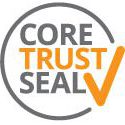Metadata Report for BODC Series Reference Number 1108523
Metadata Summary
Problem Reports
Data Access Policy
Narrative Documents
Project Information
Data Activity or Cruise Information
Fixed Station Information
BODC Quality Flags
SeaDataNet Quality Flags
Metadata Summary
Data Description |
|||||||||||||||||||||||||||||||||||||||||||||
|
|||||||||||||||||||||||||||||||||||||||||||||
Data Identifiers |
|||||||||||||||||||||||||||||||||||||||||||||
|
|||||||||||||||||||||||||||||||||||||||||||||
Time Co-ordinates(UT) |
|||||||||||||||||||||||||||||||||||||||||||||
|
|||||||||||||||||||||||||||||||||||||||||||||
Spatial Co-ordinates | |||||||||||||||||||||||||||||||||||||||||||||
|
|||||||||||||||||||||||||||||||||||||||||||||
Parameters |
|||||||||||||||||||||||||||||||||||||||||||||
|
|||||||||||||||||||||||||||||||||||||||||||||
|
|||||||||||||||||||||||||||||||||||||||||||||
Problem Reports
No Problem Report Found in the Database
Data Quality Report for FRRF profiles from cruise JR20081003
Data Quality Report
Values marked -999 in the originator's data files have been converted to the appropriate absent data value for all channels.
Functional Absorption cross-section (light and dark)
Values outside the expected range of values (0 - 1600 A2Q-1) for these parameters have been flagged as suspect.
Data Access Policy
Open Data
These data have no specific confidentiality restrictions for users. However, users must acknowledge data sources as it is not ethical to publish data without proper attribution. Any publication or other output resulting from usage of the data should include an acknowledgment.
If the Information Provider does not provide a specific attribution statement, or if you are using Information from several Information Providers and multiple attributions are not practical in your product or application, you may consider using the following:
"Contains public sector information licensed under the Open Government Licence v1.0."
Narrative Documents
Chelsea Technologies Group FASTtracka MKI FRRF
The FASTtracka is a Fast Repetition Rate Fluorometer (FRRF) designed to measure the variable fluorescence of marine phytoplankton. It can be deployed on its own or integrated in moorings, profiling systems or in towed applications.
The operation mode comprises a rapid series of high frequency flashes (200 kHz), which enable the measurement of the absorption cross section of photosystem II (PSII), the rate of electron transport and the level of photochemical quenching. A 16 MHz clock microcontroller monitors the digital acquisition of the stimulated fluorescence and the excitation flashes, while simultaneously measuring Photosynthetic Active Radiation (PAR). These concurrent measurements allow for estimates of phytoplankton primary productivity to be made.
A comparison of ambient-irradiated and dark adapted phytoplankton samples is possible due to the optical head dual (light and dark) chamber design. All measurements are stored on an internal memory card with a 24 MB capacity and are downloaded through an RS232 connector.
Additional specifications include a maximum depth rating of 500 m and a chlorophyll-a sensitivity of 0.1 to 30 µg l-1.
Further information can be found in the manufacturer's specification sheet or the user guide.
AMT18 Bio-Optics - Fast Repetition Rate Fluorometer (FRRF) profiles instrumentation
Instrument Description
| Instrument | Serial Number | Parameter |
|---|---|---|
| Chelsea FRRF | 182043 | Phytoplankton physiology |
| Chelsea PAR sensor | 046058 | PAR |
| Druck Depth sensor | 2500106 | Depth |
GE Druck PDCR/PTX 1830/1840 series presssure sensors
Basic Information
The PDCR 1830/1840 transducer (mV output) and PTX 1830/1840 transmitter (4-20 mA output) are fully submersible sensors for the measurement of hydrostatic liquid levels. IP68 rated for indefinite immersion in 700 mH2O.The Druck micromachined silicon element is sealed within an all-titanium pressure module assembly isolated from the media assembly. This is contained in a welded titanium body, terminated in an injection moulded cable assembly which features a Kevlar strain cord.
Pressure measurement
| Operating Pressure Ranges | Units | |
|---|---|---|
| PDCR 1830/1840 (mV) | PTX 1830/1840 (mA) | Other units may be specified such as: feet, inches, Bar, mBar kPa, kg/cm |
| 0.75, 1.5 mH2O gauge, 3.5, 7, 10, 15, 20, 35, 50, 70, 100, 150, 200, 350, 600 mH2O gauge and absolute | Any zero based full scale from 0.75 to 600 mH2O gauge and 3.5 to 600 mH2O absolute | |
| Excitation Voltage | |
|---|---|
| PDCR 1830/1840 (mV) | PTX 1830/1840 (mA) |
| 10 V at 5 mA nominal | 9 to 30 V |
| Output is fully ratiometric to supply within 2.5 V to 12 V limits | 9 to 28 V for intrinsically Safe Version |
Performance Specification
| Accuracy | |
|---|---|
| Combined effects of Non-linearity, Hysteresis and Repeatability:
| |
| Long-term Stability | |
| ±0.1% full scale typically per annum | |
| Operating Temperature Range (°C) | Compensated Temperature Range (°C) | ||
|---|---|---|---|
| Min | Max | Min | Max |
| -20 | 60 | -2 | 30 |
| Temperature Effects | |||
| |||
| Zero Offset and Span Setting | |
|---|---|
| PDCR 1830/1840 | PTX 1830/1840 |
| Maximum: ±0.05 mA |
Additional Options
| A: Lightning Surge Arrestor (PTX 1830/1840 only) | B: Intrinsically Safe Version | C: Alternative Pressure Connection | D: Improved Accuracy |
|---|---|---|---|
| Integral lightning protection assembly certified to standard IEC 61000-4-5 (level 4). | In place of the standard acetyl nose cone, a welded male pressure connection can be supplied. | An improved accuracy of ±0.06% full scale best straight line is available (±0.08% FS BSL for ranges below 1 mH2O (1.5 psi)) |
More information can be found in the manufacturer's specification sheet.
AMT18 Bio-Optics - Fast Repetition Rate Fluorometer (FRRF) profiles processing
Data Acquisition and Analysis
These data originate from analysis of profiles collected from the FRRF sensor deployed on the optics rig on RRS James Clark Ross between 3rd October and 10th November 2008. The optics rig was deployed from the starboard aft quarter of the ship using the capston on 180 m of 6 mm dyneema generally at solar noon. Deployment was generally on the sunward side of the ship. The rig was lowered at a rate of 0.5 ms -1 down to 180 m depth and the upcast was carried out at 0.1ms-1. Upon recovery, data from the FRRF were downloaded from using hyperterminal.
The data from the FRRF were processed using V6 of the Sam Laney (WHOI) Matlab code. This required the FRRF to be characterised using 0.2 µm filtered water, at each of the gain settings (0, 1, 4, 16, 64, 256) for both the light and dark chambers, in a black bucket. This was done once in the middle of the transect.
The primary outputs of the FRRF data stream are the maximum fluorescence (Fm) and the ratio of the variable to maximum fluorescence (Fv/Fm). The final FRRF data product consists of the phytoplankton physiological parameters binned to 2 m depth resolution.
BODC Data Processing Procedures
Data were submitted to BODC in 24 csv files and saved to the archive with accession number PML090110. The files were provided to BODC with the following metadata: cruise, Julian Day (Light/Dark), depth, latitude and longitude. Light/Dark photosynthetically available radiation channels were not loaded to the database as these channels hav been loaded to the database with the UV and AC9 profiles. Light/Dark chamber turnover time for electron flow (tau) and Light/Dark chamber gain settings were not loaded to the database and are available on request.
Parameter codes defined in BODC parameter dictionary were assigned to the variables as shown in the table below. No unit conversions were necessary as all the parameters were provided in the same units as in the BODC Parameter Dictionary.
| Originator's Parameter | Description | Units | BODC Parameter Code | Description | Units | Comments |
|---|---|---|---|---|---|---|
| Depth | Depth data depth binned to (2 m) | m | DEPHPR01 | Depth below surface of the water body by profiling pressure sensor and converted to seawater depth using UNESCO algorithm | m | - |
| FoD | Dark chamber fluorescence | Dimensionless | FOMIND01 | Minimum in-vivo fluorescence (chlorophyll) {Fo} of the water body by in-situ fast repetition rate fluorometer (FRRF) and derivation from the blank-corrected raw data from the dark chamber | Dimensionless | - |
| FoL | Light chamber fluorescence | Dimensionless | FOMINL01 | Minimum in-vivo fluorescence (chlorophyll) {Fo} of the water body by in-situ fast repetition rate fluorometer (FRRF) and derivation from the blank-corrected raw data from the light chamber | Dimensionless | - |
| FmL | Light chamber maximum fluorescence | Dimensionless | FMMAXL01 | Maximum in-vivo fluorescence (chlorophyll) {Fm} of the water body by in-situ fast repetition rate fluorometer (FRRF) and derivation from the blank-corrected raw data from the light chamber | Dimensionless | - |
| FmD | Dark chamber maximum fluorescence | Dimensionless | FMMAXD01 | Maximum in-vivo fluorescence (chlorophyll) {Fm} of the water body by in-situ fast repetition rate fluorometer (FRRF) and derivation from the blank-corrected raw data from the dark chamber | Dimensionless | - |
| Fv_FmD | Dark chamber ratio of variable to maximum fluorescence | Dimensionless | FVFMFR04 | Photochemical quantum efficiency {Fv/Fm} of the water body by in-situ fast repetition rate fluorometer (FRRF) and calculation from blank-corrected Fm and Fo fluorescence yields from the dark chamber | Dimensionless | - |
| Fv_FmL | Light chamber ratio of variable to maximum fluorescence | Dimensionless | FVFMFR03 | Photochemical quantum efficiency {Fv/Fm} of the water body by in-situ fast repetition rate fluorometer (FRRF) and calculation from blank-corrected Fm and Fo fluorescence yields from the light chamber | Dimensionless | - |
| sigmaL | Light chamber cross section of photosystem II | 10-20 m-2 photon-1 | SIGFRBL1 | Functional absorption cross-section {Sigma-PSII} of the water body by in-situ fast repetition rate fluorometer (FRRF) and derivation from the blank-corrected raw data from the light chamber | Angstrom squared per quantum | - |
| sigmaD | Dark chamber cross section of photosystem II | 10-20 m-2 photon-1 | SIGFRBL2 | Functional absorption cross-section {Sigma-PSII} of the water body by in-situ fast repetition rate fluorometer (FRRF) and derivation from the blank-corrected raw data from the dark chamber | Angstrom squared per quantum | - |
| Par(L) | Photosynthetically available radiation coincidental with Light Chamber acquisition | µW cm-2 | - | - | - | Parameter not loaded to the database |
| Par(D) | Photosynthetically available radiation coincidental with Dark Chamber acquisition | µW cm-2 | - | - | - | Parameter not loaded to the database |
| tauL | Light chamber turnover time for electron flow | µs | - | - | - | Parameter not loaded to the database |
| tauD | Dark chamber turnover time for electron flow | µs | - | - | - | Parameter not loaded to the database |
| gainL | Light chamber gain setting | Dimensionless | - | - | - | Parameter not loaded to the database |
| gainD | Dark chamber gain setting | Dimensionless | - | - | - | Parameter not loaded to the database |
Project Information
Oceans 2025 Theme 10, Sustained Observation Activity 1: The Atlantic Meridional Transect (AMT)
The Atlantic Meridional Transect has been operational since 1995 and through the Oceans 2025 programme secures funding for a further five cruises during the period 2007-2012. The AMT programme began in 1995 utilising the passage of the RRS James Clark Ross between the UK and the Falkland Islands southwards in September and northwards in April each year. Prior to Oceans 2025 the AMT programme has completed 18 cruises following this transect in the Atlantic Ocean. This sustained observing system aims to provide basin-scale understanding of the distribution of planktonic communities, their nutrient turnover and biogenic export in the context of hydrographic and biogeochemical provinces of the North and South Atlantic Oceans.
The Atlantic Meridional Transect Programme is an open ocean in situ observing system that will:
- give early warning of any fundamental change in Atlantic ecosystem functionng
- improve forecasts of the future ocean state and associated socio-economic impacts
- provide a "contextual" logistical and scientific infrastructure for independently-funded national and international open ocean biogeochemical and ecological research.
The specific objectives are:
- To collect hydrographic, chemical, ecological and optical data on transects between the UK and the Falkland Islands
- To quantify the nature and causes of ecological and biogeochemical variability in planktonic ecosystems
- To assess the effects of variability in planktonic ecosystems on biogenic export and on air-sea exchange of radiatively active gases
The measurements taken and experiments carried out on the AMT cruises will be closely linked to Themes 2 and 5. The planned cruise track also allows for the AMT data to be used in providing spatial context to the Sustained Observation Activities at the Porcupine Abyssal Plain Ocean Observatory (SO2) and the Western Channel Observatory (SO10).
More detailed information on this Work Package is available at pages 6 - 9 of the official Oceans 2025 Theme 10 document: Oceans 2025 Theme 10
Weblink: http://www.oceans2025.org/
Data Activity or Cruise Information
Cruise
| Cruise Name | JR20081003 (AMT18, JR218) |
| Departure Date | 2008-10-03 |
| Arrival Date | 2008-11-10 |
| Principal Scientist(s) | E Malcolm S Woodward (Plymouth Marine Laboratory) |
| Ship | RRS James Clark Ross |
Complete Cruise Metadata Report is available here
Fixed Station Information
No Fixed Station Information held for the Series
BODC Quality Control Flags
The following single character qualifying flags may be associated with one or more individual parameters with a data cycle:
| Flag | Description |
|---|---|
| Blank | Unqualified |
| < | Below detection limit |
| > | In excess of quoted value |
| A | Taxonomic flag for affinis (aff.) |
| B | Beginning of CTD Down/Up Cast |
| C | Taxonomic flag for confer (cf.) |
| D | Thermometric depth |
| E | End of CTD Down/Up Cast |
| G | Non-taxonomic biological characteristic uncertainty |
| H | Extrapolated value |
| I | Taxonomic flag for single species (sp.) |
| K | Improbable value - unknown quality control source |
| L | Improbable value - originator's quality control |
| M | Improbable value - BODC quality control |
| N | Null value |
| O | Improbable value - user quality control |
| P | Trace/calm |
| Q | Indeterminate |
| R | Replacement value |
| S | Estimated value |
| T | Interpolated value |
| U | Uncalibrated |
| W | Control value |
| X | Excessive difference |
SeaDataNet Quality Control Flags
The following single character qualifying flags may be associated with one or more individual parameters with a data cycle:
| Flag | Description |
|---|---|
| 0 | no quality control |
| 1 | good value |
| 2 | probably good value |
| 3 | probably bad value |
| 4 | bad value |
| 5 | changed value |
| 6 | value below detection |
| 7 | value in excess |
| 8 | interpolated value |
| 9 | missing value |
| A | value phenomenon uncertain |
| B | nominal value |
| Q | value below limit of quantification |


